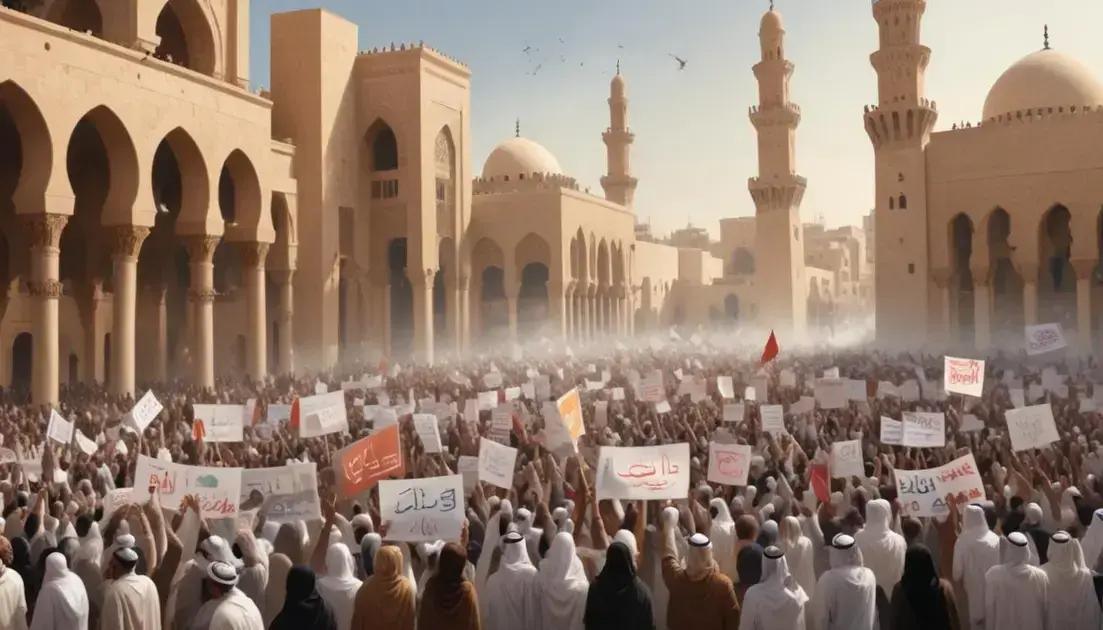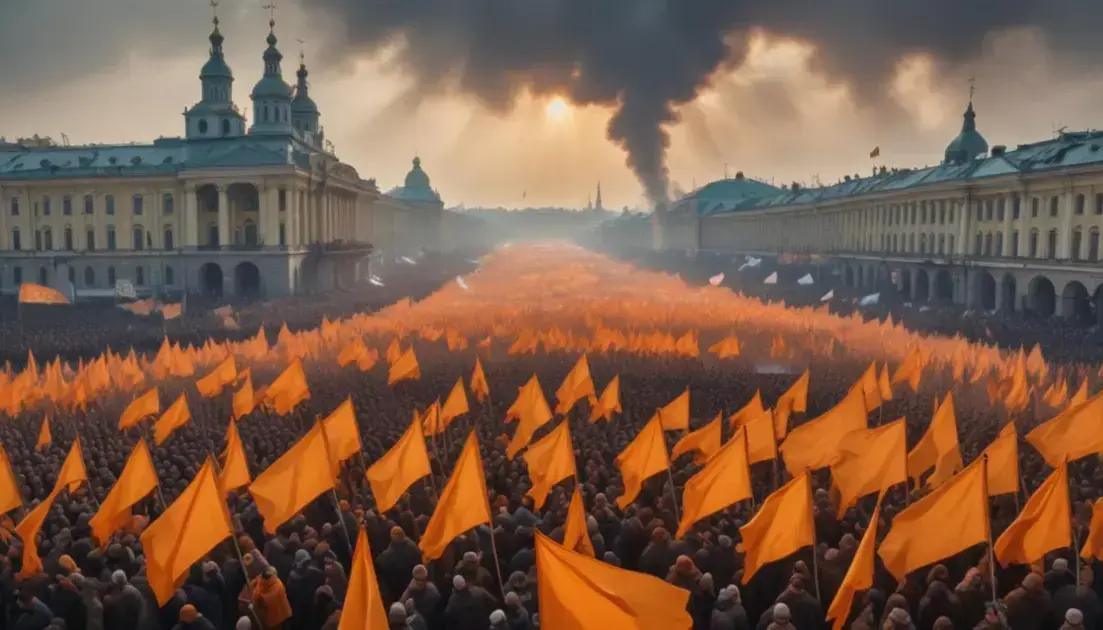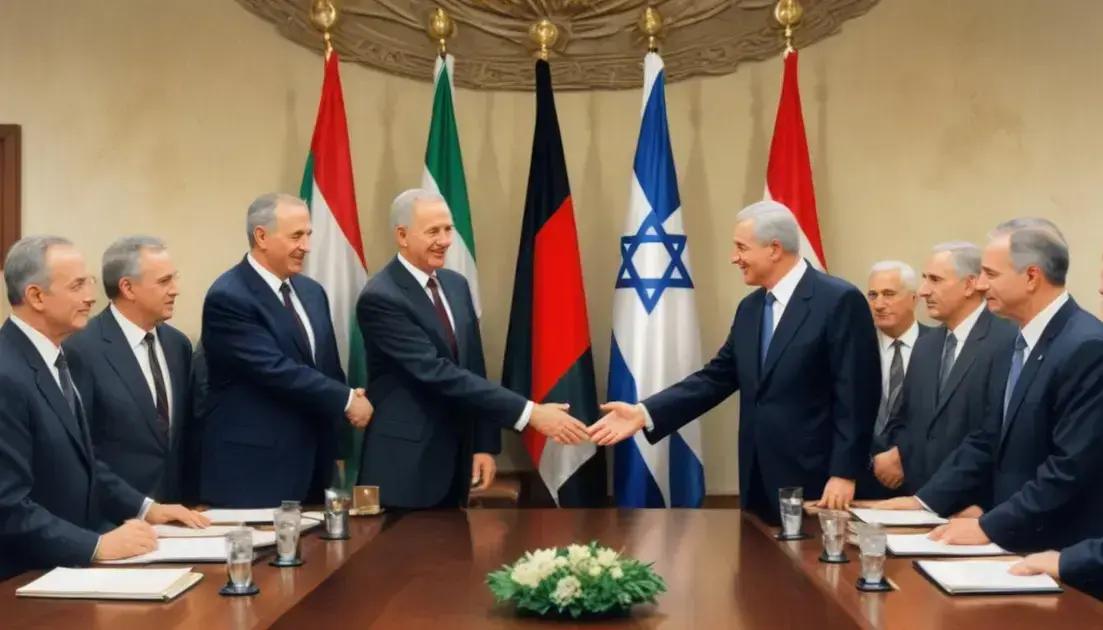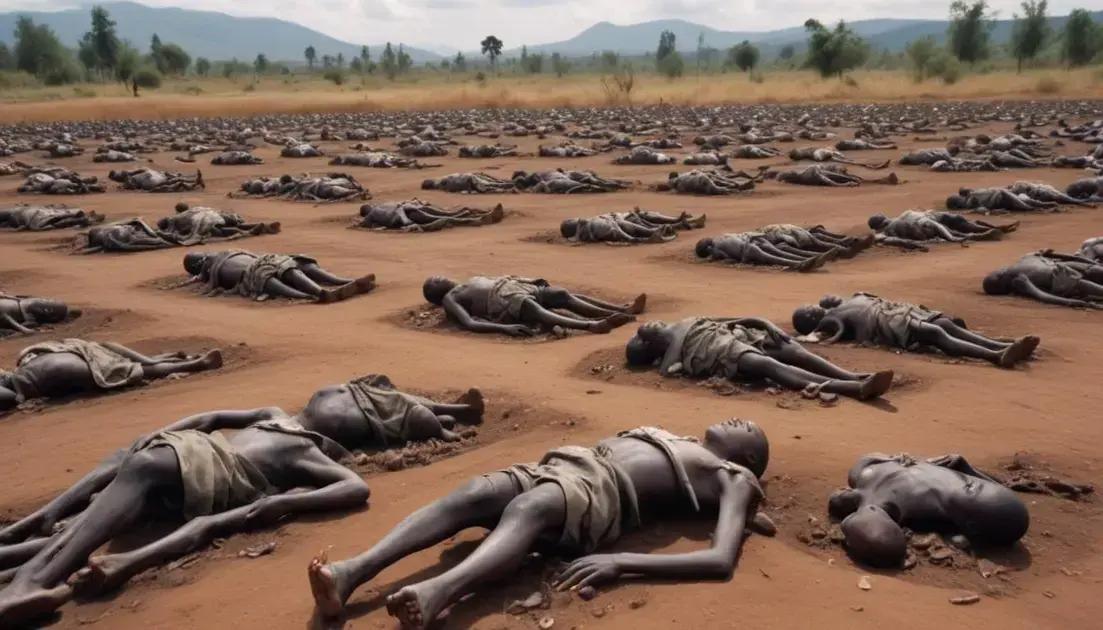
Arab Spring: Revolts, Hope and Retaliation
The Arab Spring was a series of protests and uprisings across the Middle East and North Africa that began in late 2010. Sparked by demands for democracy, social justice, and economic opportunities, it led to significant political changes in countries like Tunisia and Egypt. While some nations embraced reform, others faced conflict and instability, particularly Syria and Libya. Key lessons include the importance of social media in organizing movements, the need for a solid post-protest plan, and the understanding that true progress takes time. The Arab Spring highlighted both the power of people united for change and the complexities involved in achieving lasting democracy.
The Arab Spring marked a significant chapter in modern history, as nations across North Africa and the Middle East rose against oppression. Are we truly witnessing the dawn of democracy or simply a cycle of unrest?
What sparked the Arab Spring?
The Arab Spring started in late 2010. It began when a street vendor named Mohamed Bouazizi set himself on fire in Tunisia. This act of protest highlighted the deep frustrations many felt about corruption and unemployment.
People in Tunisia took to the streets demanding changes. They wanted better jobs, more freedom, and a say in how they were governed. The movement quickly spread to other countries, including Egypt, Libya, Yemen, and Syria.
Social media played a big role in the Arab Spring. Platforms like Facebook and Twitter helped people organize protests and share their stories. Videos of the protests went viral, inspiring others across the region to stand up against their governments.
Many were tired of living under repressive regimes. They wanted to break free from authoritarian control. The spark from Tunisia ignited a wave of protests that challenged long-standing powers. Activists used slogans like “the people want to bring down the regime” to rally support.
This was a time of great hope for many. People believed change was possible. Still, the results varied greatly from country to country. In some places, like Egypt, leaders were ousted quickly. In others, like Syria, protests led to long and destructive civil wars.
Key events during the Arab Spring
Key events during the Arab Spring shaped the course of history in the region. One of the most important moments was in Tunisia. After Mohamed Bouazizi’s act of protest, thousands of Tunisians marched in the streets. They demanded the resignation of President Zine El Abidine Ben Ali.
In January 2011, Ben Ali fled to Saudi Arabia. This was a huge win for protesters. Inspired by Tunisia, people in Egypt organized rallies. They gathered in Tahrir Square in Cairo, calling for President Hosni Mubarak to step down.
On February 11, 2011, Mubarak resigned after weeks of protests. People celebrated, believing they could bring change. In Libya, the situation turned violent. Protests against Muammar Gaddafi’s rule escalated into a civil war.
In March 2011, international intervention began, led by NATO. Gaddafi was eventually captured and killed in October 2011. This event shocked many across the globe.
In Syria, protests also erupted in March 2011. The government responded with violence, leading to a brutal civil war. This conflict continues to create a humanitarian crisis today.
Other countries, like Yemen and Bahrain, experienced protests too. Leaders in these nations also faced strong opposition. Some managed to stay in power, while others were forced to flee. The Arab Spring had a ripple effect, altering the political landscape in the region.
Outcomes for different nations
The Arab Spring had mixed outcomes for different nations. In Tunisia, the movement led to a democratic transition. After the fall of President Ben Ali, Tunisians held free elections. They created a new constitution that recognized human rights.
In Egypt, the early excitement faded quickly. After Mubarak’s resignation, the military took control. They ruled harshly, and many felt that true democracy was still far away.
Libya faced a brutal civil war. After Gaddafi’s death, the country struggled with chaos and violence. Several groups fought for power, and the situation has not stabilized.
In Syria, protests turned into a devastating civil war. The government responded violently, leading to a humanitarian crisis. Millions of people fled, creating a refugee situation in many neighboring countries.
Yemen also spiraled into conflict. Protests against President Ali Abdullah Saleh led to a civil war. It has caused tremendous suffering for the population.
Countries like Bahrain faced serious unrest but managed to suppress protests. Ruling governments tightened their grip to maintain control. In contrast, some nations faced little to no protests.
The Arab Spring showed that change is possible but often comes with challenges. Each nation’s journey reflects its unique history and political landscape. The outcomes remind us how complex the struggle for freedom can be.
The impact on global politics
The Arab Spring changed the landscape of global politics in many ways. It sparked conversations about democracy and human rights. Countries around the world began to pay attention to the events unfolding in the Middle East and North Africa.
As people demanded freedom, foreign governments watched closely. Some supported the protests, while others stayed silent. The movements showed that ordinary people could challenge long-standing regimes.
This shift inspired protests in other nations. Activists in places like Russia and China saw what was happening and pushed for change. The Arab Spring became a symbol of hope and resistance.
International relations also shifted. Western countries reevaluated their policies in the region. They began to question their support of authoritarian leaders. The U.S. and European nations were caught between protecting interests and supporting democracy.
Furthermore, the power vacuum in Libya and Syria allowed extremist groups to rise. This led to global security concerns. Terrorism became a significant issue on the international agenda, affecting foreign policy decisions worldwide.
The Arab Spring showed that political change is often messy. It raised questions about how to best support democracy. Countries learned that change can take time and might not always lead to the desired outcomes.
Lessons learned from the Arab Spring
The Arab Spring taught us many important lessons about social change. First, it showed that people can unite for a common cause. Citizens from different backgrounds and beliefs came together to demand their rights.
Another lesson is the power of social media. Platforms like Twitter and Facebook helped spread information quickly. They allowed people to coordinate protests and share their experiences. This has changed how movements organize and communicate.
However, the Arab Spring also highlighted the risks of change. In some countries, protests led to violence and instability. This reminds us that not all movements lead to positive outcomes.
It’s crucial to have a plan for what comes next. After toppling a regime, countries need strong leaders and clear goals. Without them, chaos can take over, as seen in Libya and Syria.
Another lesson is the importance of involving all groups in society. Excluding certain populations can lead to tension and conflict. Inclusive dialogue is key to building a stable future.
Lastly, the global community learned that patience is essential. Change takes time, and results may not happen overnight. Support from other nations can help but must be thoughtful and respectful of local needs.
Conclusion
In conclusion, the Arab Spring was a powerful moment in history that showed the strength of people seeking change. It taught us that united voices can challenge long-standing powers and demand better lives. However, this wave of change also highlighted the challenges that come with it.
We learned the importance of social media in organizing movements, but also the need for plans after protests. As we’ve seen, change doesn’t guarantee success without proper leadership and inclusive dialogue among all groups in society.
Lastly, the world saw that true progress takes time and patience. While the promise of freedom and democracy is exciting, the journey can be complex. By reflecting on these lessons, we can better understand how to support movements for change in the future.


